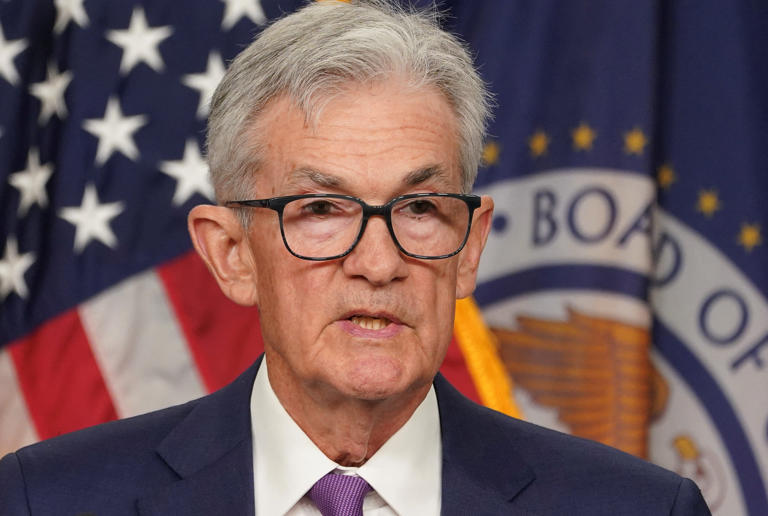This week’s Federal Reserve meeting is anticipated to conclude without an immediate interest rate cut, but it may set the stage for a potential reduction in rates as early as September. The Federal Reserve’s benchmark short-term interest rate has remained at a 23-year high of 5.25% to 5.5% since July 2023. This elevated rate reflects the Fed’s cautious approach, aimed at curbing inflation while monitoring the overall health of the economy.
Current Inflation Trends and Economic Conditions
Recent inflation data has shown notable progress. Annual inflation, which peaked at 9.1% in June 2022, dipped to 3.0% in June 2024, down from 3.3% the previous month. Despite this significant reduction, inflation remains above the Federal Reserve’s long-term target of 2%. The core inflation rate, which excludes more volatile food and energy prices, fell to 3.3%—the lowest since April 2021—indicating a gradual but positive trend towards the Fed’s target.
During a press conference following the Federal Open Market Committee (FOMC) meeting on May 1, 2024, Federal Reserve Chair Jerome Powell highlighted the progress made in controlling inflation. Powell noted that the second-quarter inflation readings had bolstered the Fed’s confidence. However, he also underscored the complexities involved in deciding when to implement a rate cut, pointing to the need for careful analysis of both inflation and broader economic factors.
Expectations for the Fed’s Upcoming Meeting
Economists predict that the Fed will not announce an immediate rate cut at this week’s meeting but might provide indications that such a move could be considered in September. According to Ryan Sweet, chief U.S. economist at Oxford Economics, while the Fed might hint at future rate cuts, the signals may be subtle. Sweet cautioned that those seeking a definitive timeline for a rate cut might find the Fed’s communication less explicit.
Interest rates are a critical tool for the Federal Reserve to manage inflation. Higher interest rates make borrowing more expensive, which typically slows down spending and economic activity, helping to ease inflation. However, the Fed must also consider its dual mandate of maximizing employment, making its decision-making process complex.
Factors Influencing the Fed’s Decision
James Knightley, chief international economist at ING, emphasized that easing inflation alone is not sufficient for a rate cut. The Fed also needs to see evidence of a softening labor market and reduced consumer spending. Despite the cooling inflation, the labor market remains relatively strong. The unemployment rate rose slightly to 4.1% in June, reflecting an increase in job seekers rather than job losses.
Consumer spending, which has been a significant driver of economic growth, remained solid, growing at an annualized rate of 2.3% from April through June. This rate is robust but slightly below the 3% growth seen in the latter half of 2023. The continued strength in consumer spending adds another layer of complexity to the Fed’s decision-making process.
Fed’s Balancing Act and Communication Strategy
In its forthcoming statements, the Federal Reserve is expected to express “greater confidence” in the progress toward its 2% inflation target, according to Gregory Daco, chief economist at Parthenon EY. However, inflation will not be the only concern. The Fed is likely to address potential risks to the economy and labor market if it delays rate cuts too long or if it proceeds too cautiously.
Michael Feroli, JP Morgan’s chief U.S. economist, highlighted concerns about consumer fundamentals. Despite easing inflation, lower-income households are feeling financial strain, and consumer confidence measures are falling. The savings rate dropped to an 18-month low of 3.4% in June, signaling potential weaknesses in consumer spending.
Future Fed Meetings and Potential Rate Cuts
The Fed will have another opportunity to discuss its policy stance at the Jackson Hole Economic Symposium, scheduled for August 22-24, 2024. This annual event brings together global economic officials and economists to discuss policy directions and may provide clearer indications of the Fed’s future plans. Stephen Brown, deputy chief North America economist at Capital Economics, suggested that the Fed’s communication this week might reflect a growing likelihood of a rate cut but anticipated that Chair Powell might reserve a more explicit announcement for the Jackson Hole meeting.
In summary, while this week’s Fed meeting is unlikely to result in an immediate rate cut, it may set the groundwork for potential reductions in the coming months. The Federal Reserve faces a complex balancing act, needing to manage inflation while supporting economic growth and employment. The coming months will be crucial as the Fed assesses the evolving economic landscape and determines its next steps.
